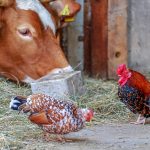
A number of headlines in the UK papers have been screaming almost literally that even half a glass of wine increases the risk of breast cancer by nine per cent. What is apparent from the global evidence is that this true to a large extent. What also needs to be examined are the other risk factors and how they impact on the incidence of these cancers.
The World Cancer Research Fund (WCRF) routinely examines data from around the world examining the links between weight and obesity, diet, physical activity with breast cancer. The latest evidence comments on an already known truism that consumption of alcohol is a risk factor for this type of cancer.
Perhaps more specifically, drinking 10g of pure alcohol daily increases the risk of premenopausal breast cancer by 5% and postmenopausal breast cancer by 9%. The amount is roughly equivalent to a small glass of wine or beer a day. A standard drink is estimated to be 14 grams of alcohol.
In the UK, this was claimed by the NHS to be an extra case of cancer in every 100 women based on current rates in the United Kingdom.
The headline is quite lurid because the WCRF report also examines other factors which reduce the risks for example. Vigorous exercise such as running, gardening or mowing the lawn so as to be ‘out of breath’ are great examples to reduce the risk. Strong evidence confirmed earlier conclusions that moderate exercise decreases the risk of post-menopausal breast cancer, the most common type of breast cancer. The most active women can reduce their risk of pre-menopausal cancer by 17 per cent and for post-menopausal women , there is a 10 per cent lower risk compared to those who are the least active. Total moderate activity such as walking as well as gardening is linked to a 13 percent lower risk when comparing the most versus least active women.
Breast Cancer Statistics.
Breast cancer is the most prevalent in the USA for women, with an estimated 252,000 cases every year. It is felt that one in three breast cancer cases in the USA might be prevented if women exercised more regularly and more vigorously, kept their weight down, abstained from alcohol and ate more healthily.
Risk Factors For Breast Cancer
The risk factors for breast cancer are many and varied – doing physical exercise has already been mentioned as a way to reduce the risk. Age, especially as we get older, our weight, such as being overweight or obese, our family history for breast cancer which brings in a genetic element are other factors. What we eat also has a bearing as does hormone levels. Generally, a multi-factorial set of risks need to be considered.
The report ‘Diet, Nutrition, Physical Activity and Breast Cancer’ (WCRF/AICR, 2017) was prepared by both the WCRF and the American Institute for Cancer Research (AICR) from 119 research studies that covered 12 million women and 260,000 breast cancer cases. It helps nutritionists for example put risk factors associated with research into breast cancer into perspective.
Anne McTiernan, MD, PhD, the lead author of the report and a cancer prevention expert at the Fred Hutchinson Cancer Research Center in Seattle, Washington State, USA stated “It can be confusing with single studies when the findings get swept back and forth.”
“With this comprehensive and up-to-date report the evidence is clear: Having a physically active lifestyle, maintaining a healthy weight throughout life and limiting alcohol—these are all steps women can take to lower their risk.”
One aspect that has to be considered is the general feeling of enjoyment and the reduction of stress when consuming alcohol as part of a strong social scene. Reducing the impact of mentally related stress factors impacts on brain and mental health too which are increasingly coming to the fore as we are able to live longer.
Diet And Breast Cancer
The report also assesses the links between diet and the risk of breast cancer. There is some limited evidence that non-starchy vegetables lower the risk for oestrogen-receptor (ER) negative breast cancers. The risk is also reduced by consumption of dairy products and diets which are rich in calcium and carotenoids. Typical foods high in all these nutrients include spinach, kale, apricots and carrots which are all known to be highly beneficial.
The lead author also stated:-
“The findings indicate that women may get some benefit from including more non-starchy vegetables with high variety, including foods that contain carotenoids.”
“That can also help avoid the common 1 to 2 pounds women are gaining every year, which is key for lowering cancer risk.”
Reference
WCRF/AICR (2017) Report: Diet, Nutrition, Physical Activity and Breast Cancer’. A Continuous Update Project. pp. 1-120



Leave a Reply